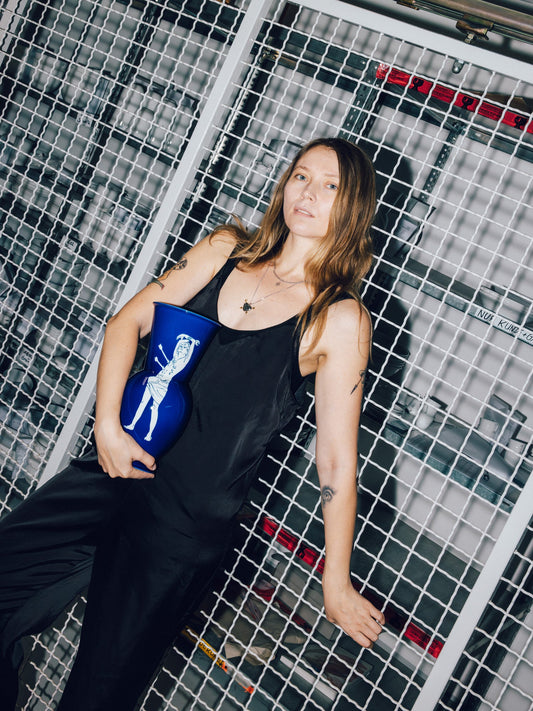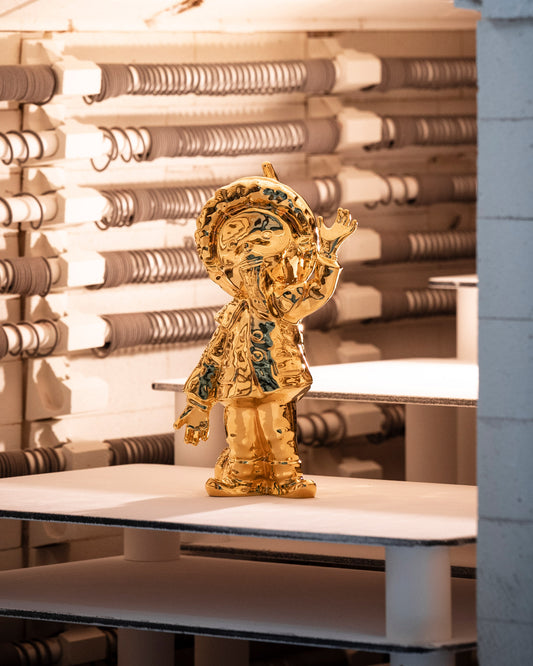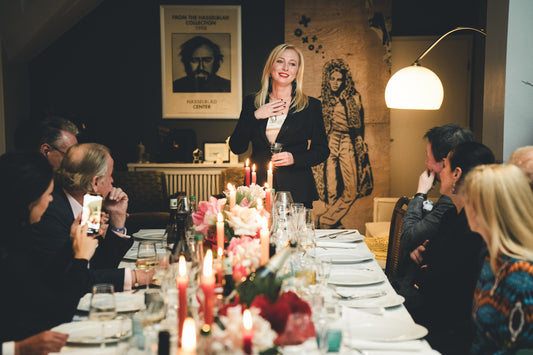WHERE DOES THE FIDIBUS VASE GET ITS NAME FROM?
If the name of this striking vase makes you think of hocus-pocus, you're not far wrong. After all, fidibuses have something to do with fire and for a long time this was considered a miracle or witchcraft. A look at the vase's origins explains exactly how it got its name.
A brilliant idea
Perhaps Karl Frederick Schinkel, one of the most influential architects of Prussian classicism, found the inspiration for the vase when he sat in front of the fireplace on a cool winter evening and let his gaze wander. A fidibus is a long piece of wood that was used to light the fire. In French, it was called fil de bois - and fidibus could be the Germanized version of this.
In any case, these wooden sticks were stored in functional vessels with a wide rim that made it easier to fan out the shavings and thus remove them. It was precisely this shape that Schinkel transferred to the vase design in 1820. The FIDIBUS vase clearly demonstrates the clear formal language and the departure from the sweeping curves of the Baroque period. Schinkel went on to create an unparalleled treasure trove of models for the Royal Porcelain Manufactory Berlin, which has lost none of its significance to this day.
The Fidibus vases
The Fidibus vessels have been an integral part of the KPM vase collection ever since. Available in three different sizes from 10 to 20 cm high, they can be used to display small bouquets as well as long-stemmed bouquets such as roses or tulips. Or you can dispense with the floral decor altogether and simply enjoy the perfect shape.
To mark the 200th anniversary of the vase, KPM head designer Thomas Wenzel has come up with something very special. The FIDIBUS platinum lamp picks up on various aspects of the time of its creation and the manufacturing process. On the one hand, there is the warmth and light-giving element of fire, which finds a contemporary translation in the design of a lamp . The negative form tells us something about the individual work steps that are necessary to produce a piece of KPM.
The base of the lamp is therefore reminiscent of a plaster cast of the FIDIBUS vase. Precious shiny platinum and an elegant fabric shade underline the sculptural character of the design centerpiece, which you are welcome to be enchanted by in the future - without any hocus-pocus.


